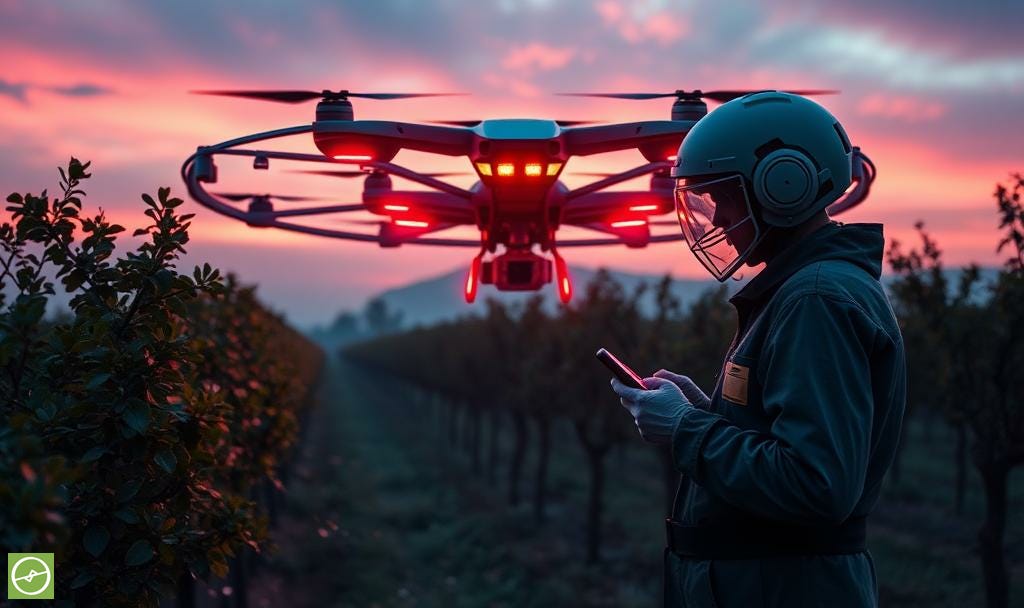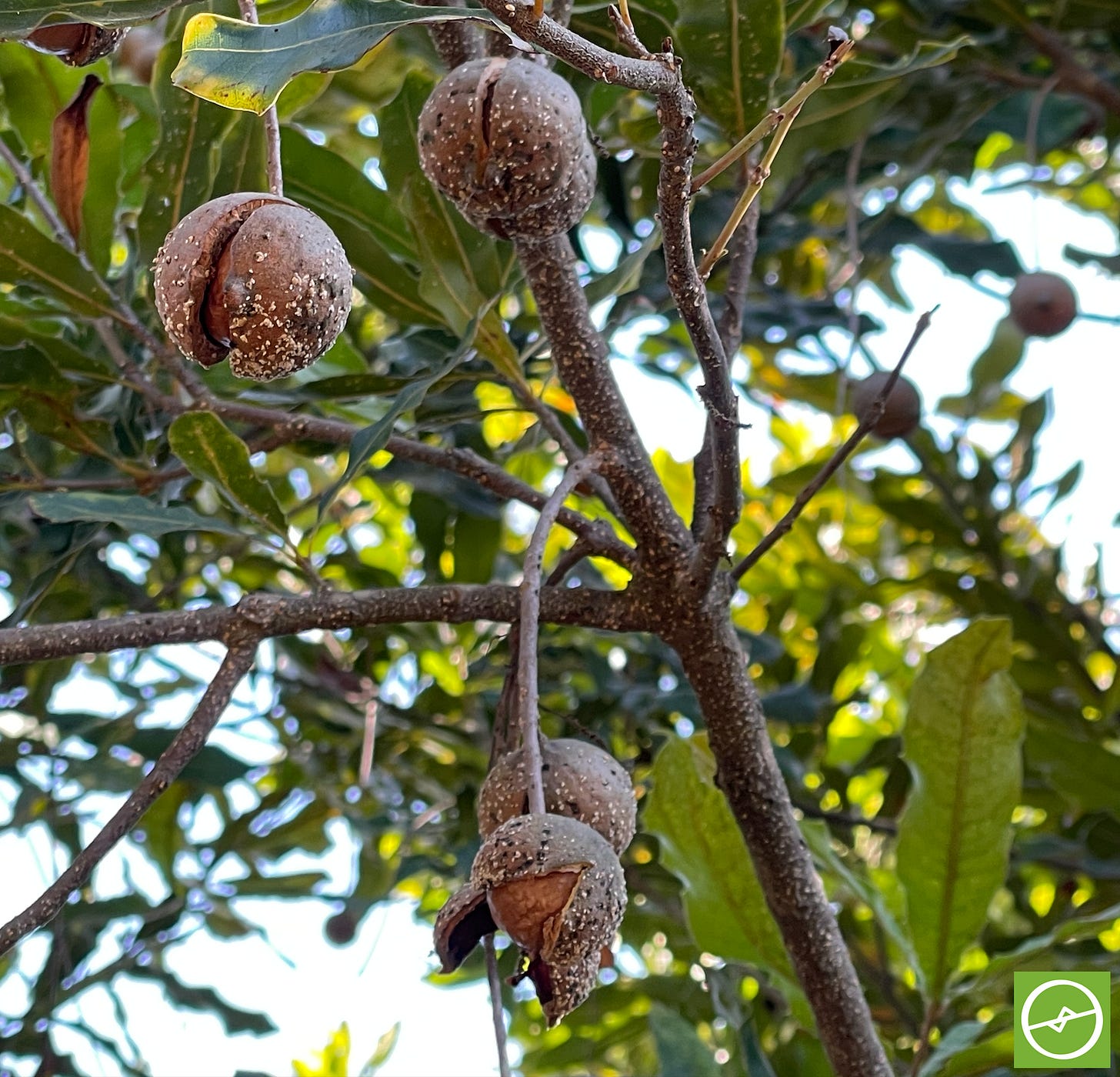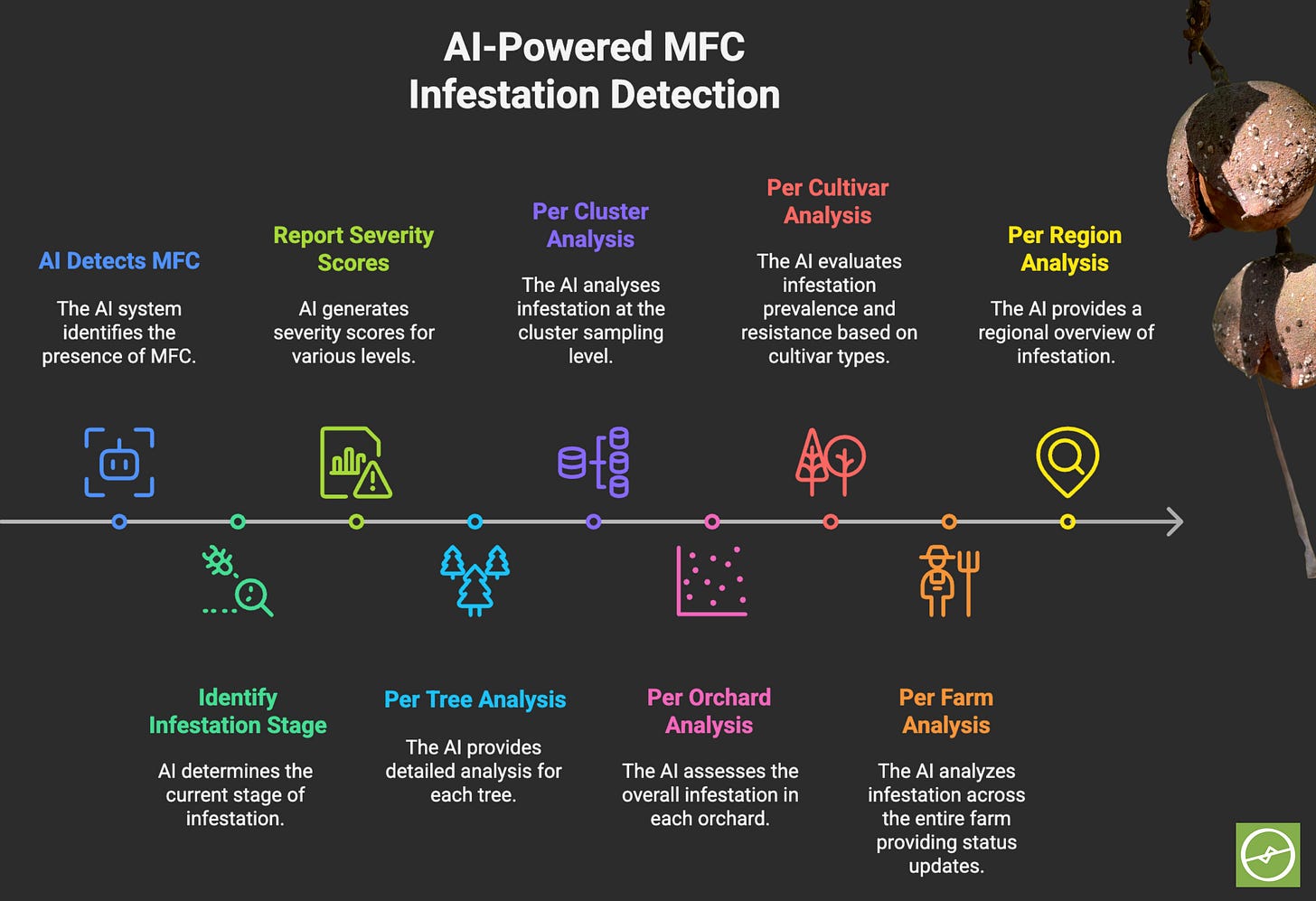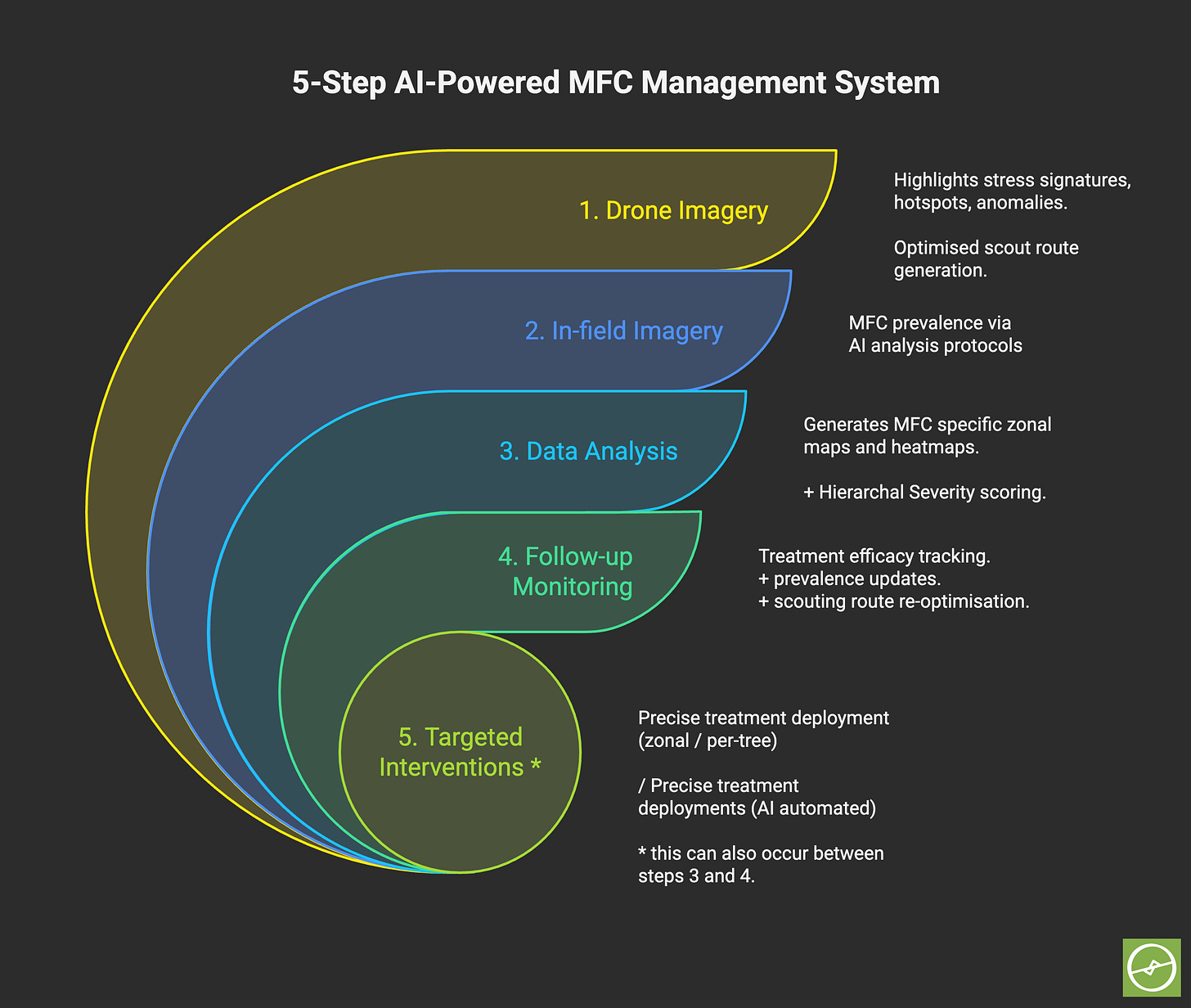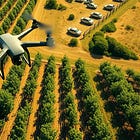Coccid Wars: The Rise of the AI Scout
MFC is devastating macadamia orchards – but what if drones and AI could detect and neutralise infestations before they spread? A look to the future of integrated pest management and precision farming.
The Enemy Among Us
Insect pests do not knock before they enter.
By the time we notice them, it is often too late.
Macadamia Felted Coccid (MFC) is one such enemy.
A sap-sucking scale insect native to Australia, it was first identified in South Africa in 2017 and has become a growing threat in orchards across the country.
The insect inserts its slender stylet into macadamia tissue – leaves, stems, branches, and nut husks. The result? Distorted growth, leaf yellowing, nut abortion, twig dieback, and a sharp decline in yield.
In severe infestations, entire branches can die back. Left unmanaged, the pest jeopardises both profitability as well as orchard [and agribusiness] longevity.
To the untrained eye, MFC symptoms can be mistaken for general stress. But once the distinctive felted sac appears, the damage is already underway.
Biology of a Pest
Understanding MFC’s lifecycle gives us insight into why it is so difficult to control:
Adult females are stationary and protected by a felted sac. They lay eggs underneath this cover.
Crawlers, the mobile juvenile stage, spread across the tree and initiate new feeding sites.
Males pupate, emerge with wings, seek out females, and die shortly after mating.
These insects are incredibly small – crawlers measure between 0.2 mm and 0.8 mm – but the impact of an infestation is enormous.
MFC populations are highly aggregated: They tend to cluster in hotspots within an orchard rather than spread evenly. These hotspots are often missed by traditional scouting methods unless they are severe and visible from a distance.
The pest thrives in dry months and produces multiple generations per year.
It’s this combination of stealth, aggregation, and year-round pressure that makes MFC particularly challenging!
Enter: The AI Scout
Imagine a near-future scenario - not decades away - one or two seasons from now.
A farmer initiates a drone scan over hundreds, if not thousands, of hectares. Drones capture RGB, multispectral, and thermal data - flagging early signs of stress in specific tree clusters.
The drone imagery is uploaded to a cloud-based analytics platform and processed using artificial intelligence.
MFC-induced stress hotspots are identified.
These are not guesses. They are precise, GPS-tagged areas showing subtle but important changes – changes that signal MFC activity before it’s become obviously visible to the naked eye.
A field scout visits the flagged hotspot.
Scouts take photographs of the nuts and branches using an AI-powered mobile app.
Instantly, an agri AI assistant analyses the imagery.
It confirms the presence of MFC.
It quantifies the severity, scoring objectively by percentage (visually confirmed symptoms).
It categorises the results by tree, cluster, orchard, cultivar, and even farming region or micro-climate (benchmark reporting and dashboard reviews come as standard with every initial or new analysis).
The scout walks on, the system grows smarter, and the farming operation becomes increasingly responsive.
AI-automations kick-in.
Follow-on drone scanning.
Updated hotspots are reported.
Scouting has become automatic via UAVs and UGVs - so have control measures.
Time is of the essence.
Objectivity Over Opinion
Traditional scouting, especially for diseases like Phytophthora for example, has traditionally relied on subjective visual scoring.
A human scout might rate a tree between 1 and 9 based on symptoms – but these ratings are inconsistent across scouts, seasons, and analysis fatigue levels.1
Artificial intelligence offers objectivity.
Once trained on enough images, it can identify MFC infestations more accurately, more quickly, and more consistently than a human ever could - especially at scale. It does so without tiring, without distraction, and without delay.
This represents more than just a better tool – it is a complete change in how macadamia pest problems are detected, quantified, and acted upon.
MFC-PPS
The “MFC Pest Prevalence Score”
A scoring metric soon obtained (and perhaps even required) at every level of the operation; quickly and efficiently despite the challenges this pest presents in the field.
Building the Full System
What is described here is not just one tool.
It is a modular, integrated pest response system:
Scan – Drone scans detect early signs of tree stress.
Sample – Scouts use smartphones to capture images of suspect clusters.
Detect – AI analyses images to confirm pest type, stage, and calculates severity (prevalence score).
Respond – Autonomous spray drones or ground units are triggered if prevalence severity thresholds are breached.
Monitor – Follow-up scans assess the impact and track spread dynamics.
And… repeat.
The result is a real-time feedback loop.
A digital immune response for orchard health.
A defence grid; protecting orchards like an agri air-defence system that never sleeps.
Future Visions, Real Technologies
Stay with me.
And let us go a step further.
Docking stations automatically charge scanning drones and refill spray drones which are activated respectively based on alerts or HQ command prompts.
Artificial intelligence predicts outbreak patterns based on historical and current weather conditions, known pest biology, and real-time if-field updates.
Responsive biocontrol agents (such as parasitoid wasps) are released using precision drones and unmanned ground vehicles.
Orchard-wide pest heatmaps guide weekly IPM meetings.
Pest population dashboards span regions and link farmer networks, agronomists, and input suppliers. Network effects create a robust alert and response system.
From detection, to action, to verification – all without time wasted, without spreadsheets, guesswork, or unnecessary chemical use.
This is not science fiction.
It is the convergence of technologies that already exist – machine learning, aerial imaging, mobile computing, autonomous spraying, and cloud-based IoT integration.
All that is missing is the orchestration.
A dream on the horizon.
Who will lead the charge?
The Cost of Doing Nothing
Across agriculture, history offers grim reminders of what happens when pest threats are ignored or detected too late.
Ten examples of pest and disease disasters that reshaped entire sectors:
Citrus Greening (HLB) – decimated citrus industries in Florida and Brazil.
Panama Disease TR4 – a global threat to banana production.
Coffee Leaf Rust – severely impacted LATAM’s coffee sector.
Grape Phylloxera – nearly destroyed the French wine industry.
Fall Armyworm – spread across the globe within a few years.
Cassava Mosaic Virus – threatens food security in sub-Saharan Africa.
Tomato Brown Rugose Virus – still spreading in major tomato-growing regions!
Potato Late Blight – triggered the Irish Potato Famine.
Bacterial Panicle Blight – an emerging rice disease tied to climate variability.
Avocado Sunblotch Viroid – difficult to detect and manage.
Want me to write about this and how AI is helping? See you in the comments.
Each of these began with a small, local problem that became a national or global catastrophe.
MFC has that potential.
But unlike in the past, we now have the technology to act with purpose.
Beyond Macadamias
This is not just about one crop.
What we build for MFC detection in macadamia orchards will be adapted for other tree crops, vineyards, berries, and high-value horticulture.
Advancements like those I see on the horizon lay the foundation for better Integrated Pest Management (IPM) across multiple agricultural arenas.
Farms of the future will be intelligent systems.
They will learn, respond, and protect themselves.
They will reduce input waste, protect biodiversity, and maintain year-round surveillance without needing human intervention every step of the way.
And it starts with building the tools – now.
And it accelerates by adoption.
By necessity.
Closing Reflections: The First Image
One photograph.
That is all it takes to begin.
A scout stands beneath a tree, raises their phone, and takes an image of a nut cluster. A set of branches. That image is analysed by artificial intelligence. It triggers a response. That response leads to (1) knowledge and (2) taking action. Saves trees. Saving yields. A simple image protects whole harvests. It preserves livelihoods.
We are not dreaming. We are forecasting.
We are designing the systems that will defend agri businesses and fight for food security. It must happen. If pests will not rest, neither should our systems.
Referring to the physical and cognitive tiredness that field scouts experience during long days in orchards, which can directly affect the accuracy, consistency, and objectivity of their pest or disease assessments.



